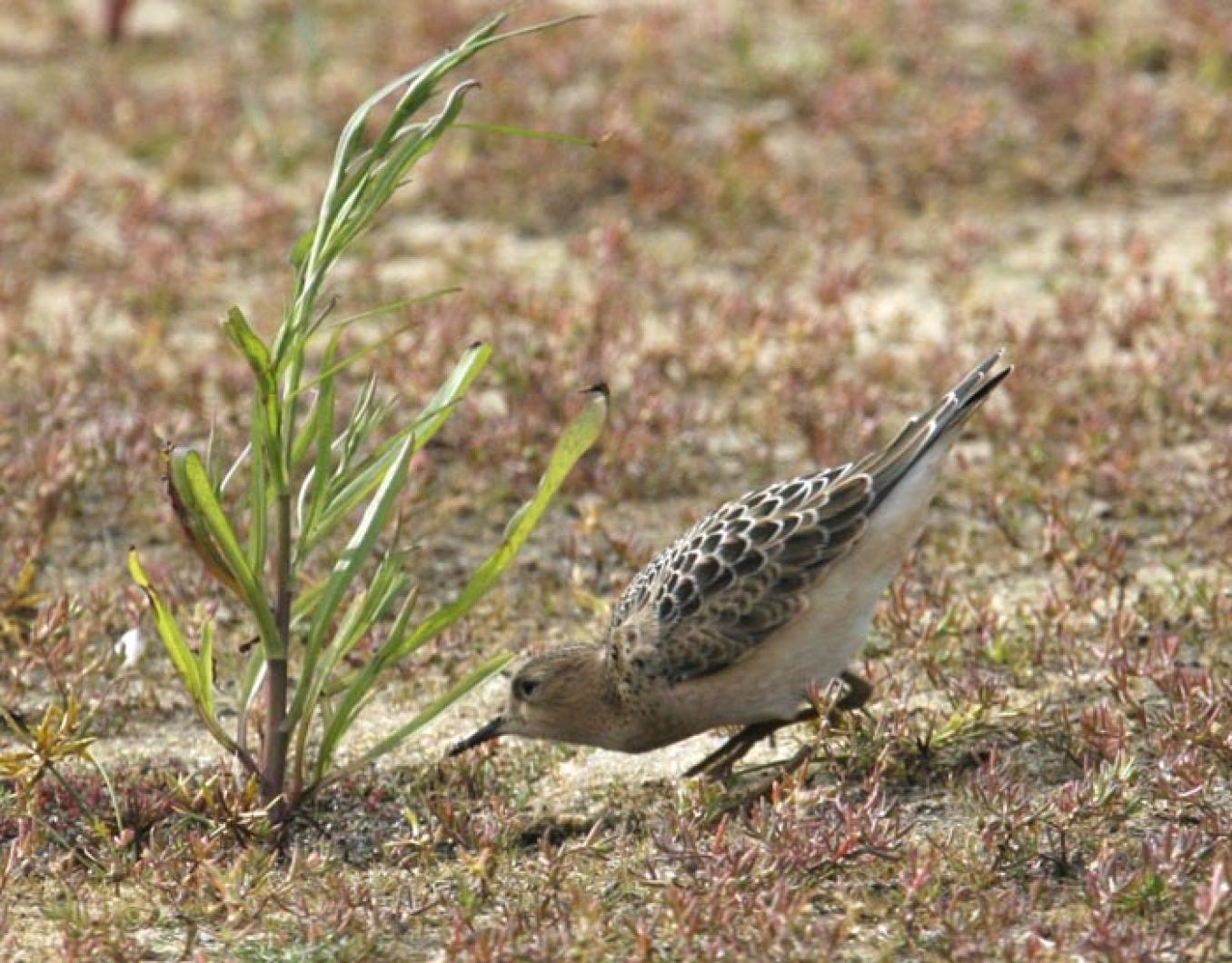Liz Baldwin, the assistant director of Biodiversity Works, Inc., e-mailed me that her camcorder for recording the movements of the otters, which is located at the west end of Crab Creek at Quansoo, is missing. Liz and Luanne Johnson have been working on the Island’s otter population for over a year! Liz doesn’t care that much about the camera, but wants the data. If anyone knows about the whereabouts of the camcorder please contact Liz at biodiversityworksliz@gmail.com.
Nat Woodruff, Dan Waters, Matt Pelikan, Larry Hepler, Flip Harrington and I have all been observing behavior which is, in our eyes, very unusual for the ruby-throated hummingbirds. The hummingbirds are very aggressively chasing each other away from the feeders and buzzing each other. Some of the flights are straight up and down, not the U shaped flights we saw during breeding season this spring. After doing some research I found out that the behavior we are seeing is a combination of lack of nectar due to Hurricane Irene and weaning of the fledglings by the adult female. It seems that for a period immediately after fledging, a female will tolerate the presence of her own young at the feeder. Shortly thereafter they are no longer accepted as offspring, but instead as rivals. This is intensified at this time of year as they seek out the food necessary to prepare for the fall migration. We have one female that hangs out on a rosa rugosa branch and just stares at the feeder. The minute another hummingbird approaches, she is off the perch in a beeline to chase the intruder away from “her” feeder.
If you are curious about the sex of the ruby-throated hummingbird you are seeing around your feeder, here are two cues: The male is probably long gone. He migrates earlier than his mate. If there is a male around, it boasts the red gorget (throat patch) and has a forked tail with no white edges. The female has rounded tails which are edged with white. The females tend to be larger than males, although after rearing her brood, the adult female loses a lot of weight and becomes smaller than her young.
Enjoy the ruby-throated hummingbird “wars,” as they will be leaving by the end of the month. Don’t forget to clean you feeders when you refill them!
Bird Sightings
Jonathan Mayhew and Bob Iwaskiewicz hit the nail on the head. The post Hurricane Irene birding is still hot. Bob Iwaskiewicz (aka Wax) watched 12 sooty shearwaters fishing along the tideline at Lobsterville between the jetties and Dogfish Bar on August 31. The next day, Sept. 1, Jonathan Mayhew and Lee Ann E. Kromout spotted a brown pelican off Gay Head. Lee Ann posted the photo on Facebook so we have a positive ID. Jonathan added that on Sept. 3 the brown pelican was cruising around Nashaquitsa Pond, probably the same bird. This is only the fifth record of brown pelican for Martha’s Vineyard! The sightings of the brown pelican have always been after storms. Earlier in the day on Sept. 1 while Bob Iwaskiewicz was fishing off Lobsterville, he observed three black skimmers, two adults and one immature, fly by.
On August 30 Bert Fischer saw a black-billed cuckoo near his Gay Head home. Brian O’Sullivan sent me a nice photo of a green heron he took by the Little Bridge between Oak Bluffs and Edgartown. Allen Keith checked out the birds at Quansoo on August 31; the best birds he saw were one royal and three Forster’s terns, 12 white-rumped sandpipers, eight short-billed dowitchers and a red knot.
Steve Allen called to report the birds he had seen Sept. 1 at Felix Neck. They included yellow-billed cuckoo, belted kingfisher, northern flicker and green heron. Rob Culbert counted four bobolinks flying east across Menemsha Pond the same day. On Sept. 3 Rob was at Edgartown Great Pond where he found four blue-winged teal by the boat ramp. At Katama Rob spotted four species of gulls — herring, ring-billed, great black-backed and laughing. Also in the field were five killdeer, greater yellowlegs and brown-headed cowbirds. A juvenile northern harrier was hunting the field. Allan Keith saw a Sandwich tern at Norton Point on the same day.
Bob Shriber counted five Forster’s terns at Lobsterville on Sept. 2 and watched northern gannets fishing off Gay Head the following day. Bob birded the Farm Institute on Sept. 4 and found a buff-breasted sandpiper around noon. He got the word out and at 3:15 p.m. Warren Woessner found the “buffy,” as we call this uncommon fall visiting sandpiper. Lanny McDowell and Pete Gilmore found the buffy again at the Farm Institute on Sept. 5. Allan Keith found the “buffy” the next day along with two golden plovers. On the mudflats of Chilmark Pond Allan found a Bairds’s sandpiper in with least and semipalmated sandpipers and plovers.
Matt Pelikan photographed an immature little blue heron and a solitary sandpiper at the state forest headquarters pond on Sept. 6.
Sarah Mayhew watched a large flock of common grackles fly over her West Tisbury house on Sept. 6. Warren Woessner spotted a sharp-shinned hawk and a northern harrier at Katama the same day.
Rob Bierregaard e-mailed to say “our two Vineyard young [ospreys]from this year, Snowy and Henrietta, are wandering around. Snowy’s in western Long Island and Henrietta’s bouncing around between Cape Cod and the Vineyard.”
Please report your bird sightings to the Martha’s Vineyard Bird Hotline at 508-645-2913 or e-mail to birds@mvgazette.com.
Susan B. Whiting is the coauthor of Vineyard Birds and Vineyard Birds II. Her Web site is vineyardbirds2.com.





Comments
Comment policy »